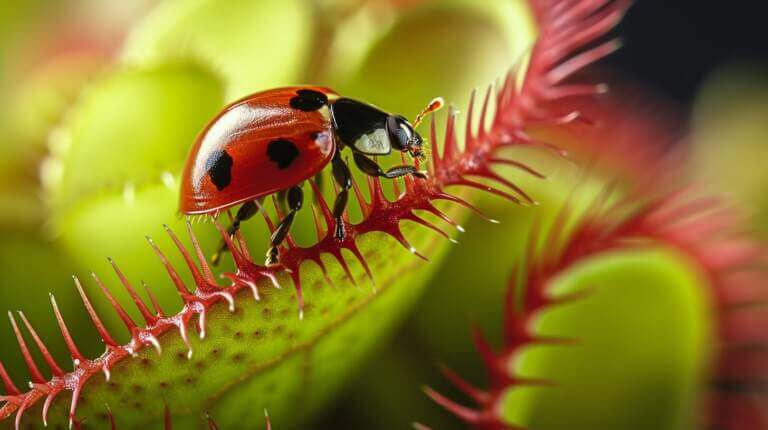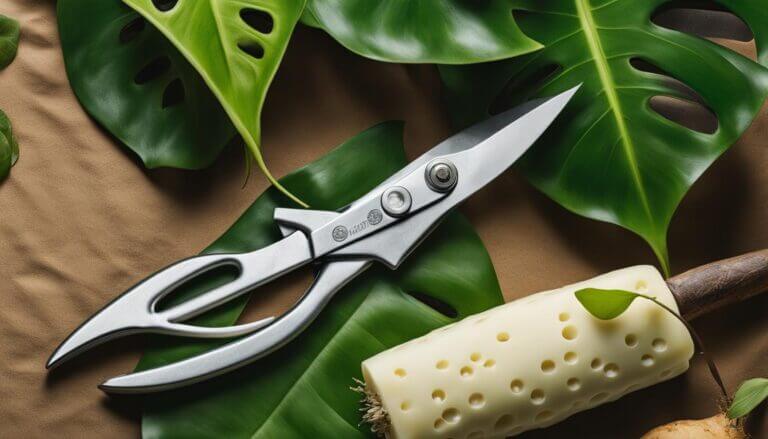Growing plants can bring so much joy and beauty to a space, and one plant that I absolutely adore is the rubber plant. With its glossy leaves and air-purifying qualities, it’s no wonder why it has become a popular choice among plant enthusiasts. If you’re looking to expand your collection or simply want to propagate your rubber plant, rooting it in water is a great option. Who doesn’t want to get more houseplants for free from an original plant?
What is a rubber plant and why root it in water?
Rubber plants, also known as Ficus elastica, are large, tropical houseplants that can thrive in both bright and low light conditions. They are known for their thick, shiny leaves and ability to remove toxins from the air. Rooting a rubber plant cutting in water allows you to propagate new plants from an existing one, giving you the opportunity to expand your plant collection or give them as gifts to friends and family.
Benefits of rooting a rubber plant cutting in water
- Easy and inexpensive: Rooting a rubber plant cutting in water is a simple and cost-effective way to propagate new plants. All you need is a clean glass jar, fresh water, and a healthy rubber plant cutting.
- Higher success rate: Rubber plants are known for their ability to root easily in water. This method provides the optimal conditions for the cutting to develop roots, increasing the chances of successful propagation.
- Monitoring root growth: When rooting a rubber plant cutting in water, you have the advantage of being able to see the root development. This allows you to track the progress of your new plant and ensure that it is growing strong and healthy before transferring it to soil.
- Flexibility and versatility: Water rooting gives you the flexibility to choose the type of container you want to display your rubber plant cuttings in. You can opt for a clear glass jar to appreciate the roots’ growth or use decorative containers that match your personal style.
- Sharing the joy: Once your rubber plant cutting has developed roots and is ready for planting, you can share the joy of growing plants by giving them as gifts to your loved ones. It’s a wonderful way to spread the beauty of nature and bring happiness to others.
Rooting a rubber plant cutting in water is a rewarding and enjoyable process. It allows you to propagate new plants easily and cost-effectively, while also providing you the opportunity to watch the roots grow and share the joy of growing plants with others. So go ahead, give it a try, and watch your rubber plant family grow!
Step 1: Selecting and preparing the cutting
Identifying a healthy branch and making a sharp cut
When it comes to propagating a rubber plant cutting in water, the first step is to select a healthy branch. Look for a stem that is at least 6 inches long and has several sets of leaves. Ensure that the branch is free from any signs of disease or damage.
To make a successful cutting, it’s essential to make a clean and sharp cut. Use a pair of clean and sharp pruning shears or a knife to cut the stem at a 45-degree angle. This angle allows for better water absorption and prevents the cutting from sitting directly on the bottom of the container.
Trimming the cutting and removing lower leaves
Once you have made the cut, inspect the cutting for any damaged or wilted leaves. Remove these lower leaves by gently pinching them off. It’s important to leave a few sets of leaves at the top to allow the cutting to photosynthesize and produce energy.
Next, trim the bottom end of the cutting to create a fresh surface for water absorption. Cutting at an angle again will maximize the surface area for water uptake. Remove any excess leaves or branches that may be present at the bottom of the cutting.
At this stage, your rubber plant cutting is ready to be placed in water for rooting. Fill a glass or container with filtered water, making sure to cover at least 2-3 inches of the stem. Avoid using tap water as it may contain chemicals that could hinder the rooting process.
Remember to change the water every few days to prevent the growth of bacteria or mold. Keep the container in a warm and bright location, but avoid direct sunlight, as it may scorch the cutting.
With proper care and patience, you can expect to see roots forming within a few weeks. Once the roots are about an inch long, you can transfer the cutting into a pot with well-draining soil and continue caring for it as you would a mature rubber plant.
Propagation can be a rewarding experience, and with this step-by-step guide, you’ll be well on your way to growing new rubber plants from cuttings in no time.
Step 2: Submerging the cutting in water
Choosing a suitable jar and clean water
When it comes to propagating a rubber plant cutting in water, selecting the right jar and using clean water are essential for successful rooting. Here’s what you need to do:
- Choose a jar: Look for a transparent jar or glass container that is big enough to accommodate the cutting without any leaves touching the water. Make sure the jar is clean and free from any residue or contaminants that could hinder rooting.
- Use clean water: Fill the jar with clean, room temperature water. It’s important to avoid tap water that contains chlorine or other chemicals that may inhibit rooting. If your tap water isn’t suitable, you can use distilled or filtered water instead.
Placing the cutting in water for optimal rooting
Now that you have your jar and clean water ready, it’s time to start the rooting process. Here’s how to do it:
- Prepare the cutting: Take a 6-8 inch cutting from the rubber plant, making sure it has at least one leaf node. Remove any leaves from the lower half of the cutting, leaving only a few leaves at the top.
- Insert the cutting into the jar: Carefully insert the stripped end of the cutting into the water-filled jar, ensuring that at least one leaf node is submerged. The leaf node is where the roots will eventually develop.
- Position the cutting: Place the jar in a bright, indirect light location, such as near a window. Avoid exposing the cutting to direct sunlight, as it may cause the leaves to wilt or burn. Maintain a warm room temperature between 65-75°F (18-24°C) for optimal rooting conditions.
- Monitor and replace water: Check the water level in the jar regularly and replace it with fresh, clean water as needed to keep the cutting submerged. It’s important to maintain the water level to prevent rotting and promote healthy root growth.
By following these steps, you’ll be on your way to successfully rooting a rubber plant cutting in water. Just be patient, as it may take a few weeks to several months for roots to develop. Once you see the roots forming, you can transfer the cutting to a pot with well-draining soil and watch your new rubber plant thrive.
Step 3: Maintaining the water and checking progress
Keeping the cutting in a bright spot
Now that you have successfully prepared your rubber plant cutting and placed it in water, it’s time to focus on maintaining the right conditions for root development. One crucial factor is sunlight. Find a bright spot for your cutting, preferably near a window where it can receive indirect sunlight. Avoid placing it in direct sunlight as this could cause the leaves to scorch.
Changing the water regularly and monitoring root development
To keep your rubber plant cutting healthy and encourage root growth, it’s important to change the water regularly. Stagnant water can lead to the growth of bacteria or fungi, which can harm the cutting. Aim to change the water every few days or whenever it appears murky.
While changing the water, take the opportunity to gently rinse the cutting and inspect it for any signs of rot or decay. Healthy roots should be white or light-colored, while dark or slimy roots may indicate rot. If you notice any signs of deterioration, trim the affected area with clean, sterilized scissors.
As you continue to care for your cutting, keep a close eye on its progress. After a few weeks, you should start to see tiny white roots emerging from the node area where the leaves were attached. This is a positive sign that your cutting is successfully developing roots. Be patient, as it can take several weeks or even months for the roots to fully establish.
Remember to replenish the water with fresh, room temperature water whenever necessary. You may also choose to add a rooting hormone to promote root growth, following the instructions provided by the manufacturer.
By maintaining the water quality, providing adequate sunlight, and monitoring the root development, you are giving your rubber plant cutting the best chance to thrive and eventually be ready for potting in soil.
Step 4: Transferring the rooted cutting to soil
Determining the right time for transplantation
After patiently waiting for your rubber plant cutting to develop strong roots, it’s time to give it a new home in soil. But how do you know when the right time for transplantation has come? Look for these signs:
- Root Growth: Check the bottom of the water container for a healthy network of roots. When the roots are at least an inch long, it’s a good indication that the cutting is ready to be transferred to soil.
- Leaf Development: Look for new leaf growth on the cutting. Once the plant shows new leaves, it means it is actively growing and can thrive in soil.
Preparing the pot and soil for successful relocation
To ensure a successful transplant, follow these steps to prepare the pot and soil:
- Pot Selection: Choose a pot that is slightly larger than the root ball of the cutting. This will provide enough space for the roots to grow without overwhelming the plant.
- Soil Preparation: Use a well-draining potting soil that is suitable for indoor plants. Avoid using garden soil, as it may retain too much moisture and lead to root rot. You can also mix in some perlite or vermiculite to improve the soil’s drainage.
- Soil Moisture: Moisten the soil before planting the cutting. Ensure that it is damp but not waterlogged. You want the soil to be evenly moist for optimal root growth.
Now that you’ve prepared the pot and soil, it’s time to carefully transfer the rooted rubber plant cutting:
- Fill the pot with the prepared soil, leaving enough room at the top for watering.
- Create a hole in the center of the soil, using your fingers or a small trowel.
- Gently remove the rubber plant cutting from the water container, being careful not to damage the delicate roots.
- Place the cutting in the hole, ensuring that the roots are fully covered with soil. Press the soil lightly to secure the cutting in place.
- Water the newly planted cutting until the soil is evenly moist. Avoid overwatering, as this can lead to root diseases.
With proper care, your rubber plant cutting will establish itself in its new soil home and continue to grow into a beautiful and healthy plant. Remember to provide adequate sunlight, water when the soil is dry, and monitor the plant for any signs of stress or nutrient deficiencies
FAQ
What is the easiest Rubber Plant(ficus elastica) propagation method for beginners?
Stem cuttings – Make a cut a 4-6 inch stem or take cuttings below a node. Remove lower leaves and place in water or moist potting mix. Roots will emerge in 4-8 weeks.
Air layering – Wound outer bark on still-attached stem. Cover with sphagnum moss and plastic. Roots will grow in 2-4 weeks before cutting.
Leaf cuttings – Cut leaves with petioles attached. Plant upright in soil. New plants will generate where leaf meets stem.
How do I propagate a rubber plant in water?
To propagate a rubber plant in water, start by taking a cutting from the parent plant. Make a clean cut just below a leaf node and remove any lower leaves, leaving only a few at the top. Place the cutting in a jar or glass filled with water and change the water every week. Roots will eventually develop, and once they have grown a decent length, you can transfer the cutting to a pot with soil.
Can I propagate rubber plants in water only?
Yes, rubber plants can be propagated in water alone. This method is called water propagation, and it is a popular way to propagate rubber plants as it is relatively easy and yields good results.
What is the best method of propagation for rubber plants?
There are several methods of propagation for rubber plants, but one of the most common and successful methods is water propagation. This involves placing a rubber plant cutting in water until roots develop, and then transferring it to a pot with soil.
How long does it take for a rubber plant to root in water?
It typically takes around 2-4 weeks for a rubber plant cutting to develop roots in water. However, the time it takes can vary depending on the conditions and the health of the cutting.
Should I use tap water or filtered water for rubber plant propagation?
A: It is recommended to use filtered water rather than tap water for rubber plant propagation. Tap water may contain chemicals or pollutants that can be harmful to the cutting or interfere with root development.
How often should I change the water when propagating a rubber plant in water?
A: It is important to change the water for a rubber plant cutting every week. This helps to prevent the buildup of bacteria or algae, which can be detrimental to the cutting’s health.
How do I know when a rubber plant cutting is ready to be transferred to soil?
A: A rubber plant cutting is ready to be transferred to soil when it has developed a healthy root system. The roots should be at least a few inches long and well-established. You can gently tug on the cutting to see if it resists being pulled out of the water, which indicates that the roots have developed sufficiently.
What care does a propagate rubber trees need?
A: Once a rubber plant has been successfully propagated and transferred to soil, it requires similar care to an established rubber plant. This includes providing it with bright, indirect light, regular watering, and occasional fertilization.
Can I propagate a rubber tree from a leaf cutting?
A: While it is possible to propagate some plants from leaf cuttings, rubber plants are best propagated from stem cuttings rather than leaf cuttings. Stem cuttings have a higher chance of rooting successfully and developing into a new plant.







